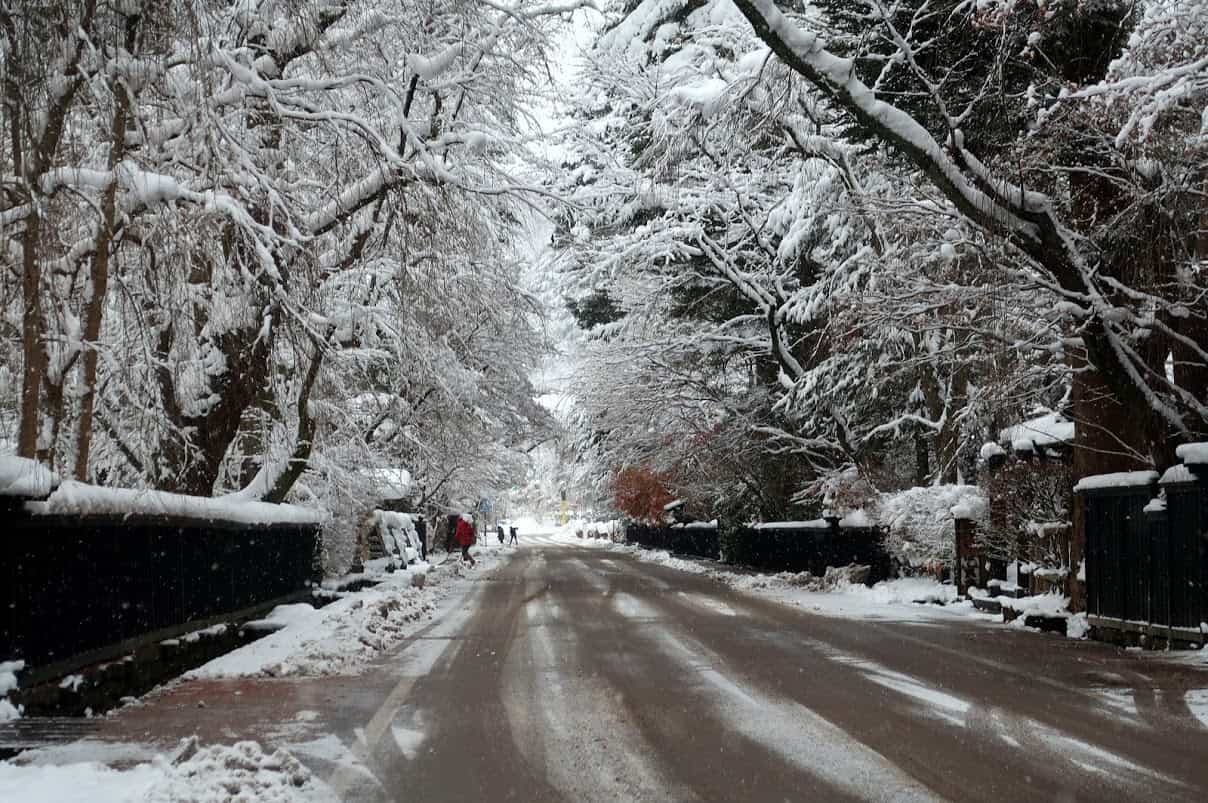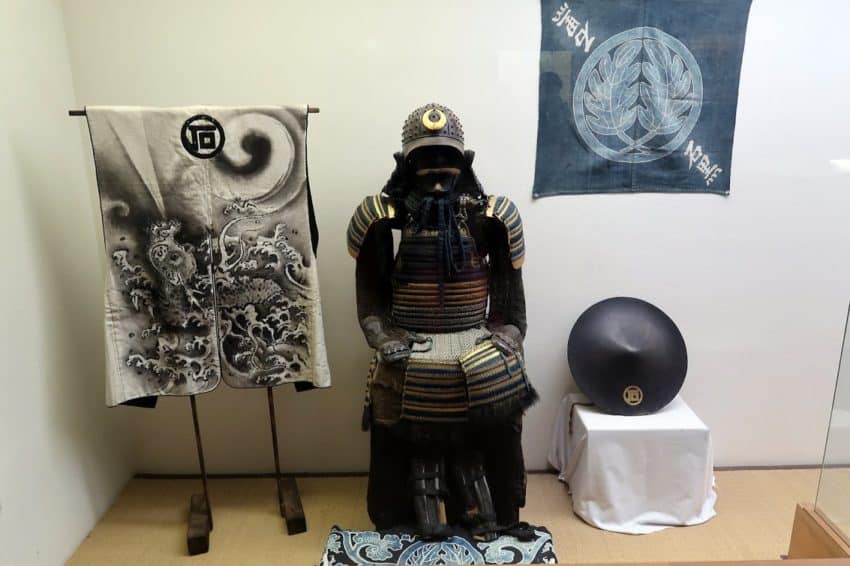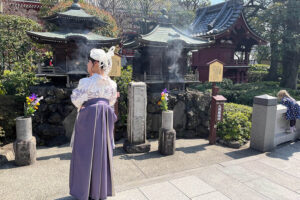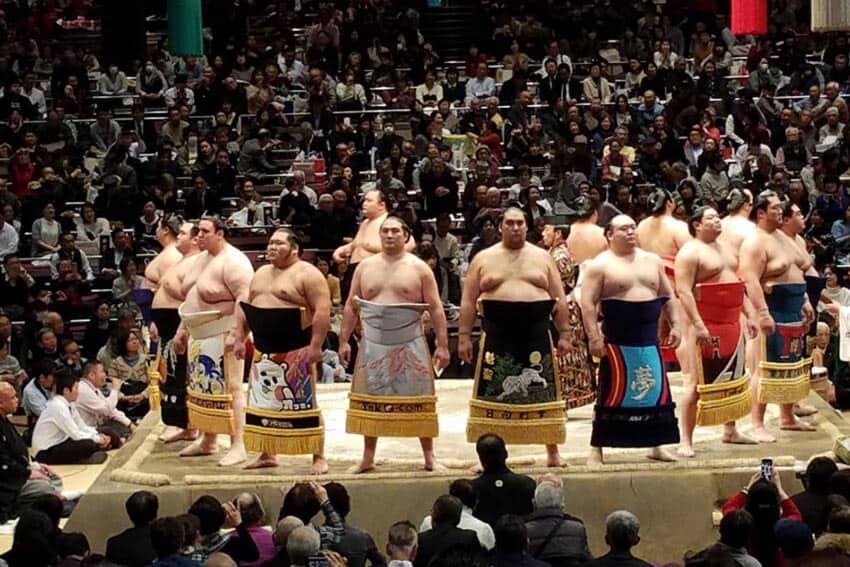
Kakunodate Castle Town Offers a Look into the Lives of the Samurai
By Beth Reiber
Senior Writer
I love old homes, which is why I live in a folk Victorian house built in 1890. I often find myself wondering what life was like in the 1890s and wishing wistfully that just once in

my life, I would look out my window and see a horse and buggy tied up to my hitching post.
But that’s nothing compared to how my imagination runs wild when I walk the streets of Kakunodate.
Founded exactly 400 years ago, it has one of the most attractive and best-preserved samurai districts in Japan. As a bonus, Kakunodate is also famous for its cherry trees.
Located in Japan’s northern region of Tohoku, Kakunodate is a place I’d like to have visited during the Edo Period (1603–1867), my favorite epoch in Japanese history.
Those were the centuries when the shogun (military dictator) ruled the country from Edo (present-day Tokyo) and fiefdoms across Japan were under the helm of feudal lords aided by their samurai retainers.
A Hilltop Castle
Kakunodate was one such fiefdom. What a sight it must have been, a hilltop castle dominating the landscape and samurai and merchants walking the streets. There are still historic landmarks dating back to the Edo Period, and many of the Kakunodate’s 14,000 inhabitants are descendants of those samurai and merchants.
How cool would that be, to know that your great-great-great-grandfather strutted through town, his hair in a topknot, swords at this side and that his great-great-great-grandpa did the same before him?

Feudal lord Ashina Yoshikatsu founded Kakunodate in 1620, choosing the site for its river and protective mountains on three sides. He constructed his castle on Mt. Furushiro, while his samurai retainers settled south of the castle, building thatched-roof mansions that reflected their social status.
Merchants eager to serve the needs of the samurai lived farther south, in a bustling district of cramped quarters and narrow streets.
Separating the two districts was a fire shield, including a 9.8-foot-high wall, to protect the samurai from the frequent fires that plagued the 420 households in the crowded merchant district.
Ruins Atop Mt Furushiro
Although the castle is long gone, with only ruins atop Mt. Furushiro, Kakunodate’s original castle-town layout survives remarkably intact. The former merchant’s settlement is still the town’s economic center, containing most of the town’s shops and municipal buildings, while the old samurai district retains its feudal pedigree to an amazing degree.

Dotting the cityscape are around 200 thick-walled kura (storehouses), built during the Edo Period to protect treasures and rice from fire.
Sadly, the town’s 200-some samurai manors (bukeyashiki) did not fare as well, with only a few now remaining. The samurai district’s infrastructure, however, retains notable features, making it one of Japan’s best places to imagine the life of a samurai.
Bukeyashiki Dori, the district’s imposing 32-foot-wide main boulevard, is flanked on both sides by dark wooden fences, traditional samurai entry gates, and weeping cherry trees, giving it a clean, uniform line of vision you don’t often see in the architectural chaos of today’s Japan.
Samurai’s Social Status
What I find most interesting about Kakunodate’s six samurai mansions open to the public is what they tell us about a samurai’s social status. Only high- and middle-ranked samurai were permitted to live on Bukeyashiki Dori, which was even wider than streets in Edo, while low-class samurai were restricted to narrower side streets.
In addition, only upper-ranked samurai had the privacy of high wooden fences; poorer samurai marked the boundaries of their properties with shrubs or fences fashioned from twigs. Entry gates also told a story, with the grandest and most expensive giving credence to the real estate beyond.

Many samurai had extensive gardens, planted with vegetables like daikon radishes and trees like persimmon, chestnut, and walnut, as well as towering shade trees. Lower-ranked samurai supported themselves with cottage industries, harvesting the bark from their many cherry trees to craft beautiful items.

Of course, it goes without saying that all samurai lived well compared to the merchants, who occupied dwellings measuring about 2,100 square feet and faced many restrictions that reflected their low status.
Trees in the merchant district, for example, had to be shorter than those in the samurai neighborhoods, as a reminder of their inferiority.
Odano Samurai House
Four of the samurai bukeyashiki open to visitors belonged to low- and middle-ranked samurai, including the Odano Samurai House, a middle-class home that once had a dojo for martial arts, and Matsumoto Samurai House, which belonged to low-ranking scholars and where you can usually see craftsmen making objects from tree bark, a local handicraft.
Kawarada Samurai House is noted for its moss garden and black kura, while Iwahashi Samurai House has all the markings of a middle-class samurai dwelling, including two main entrances, one for high-class samurai and ceremonial events like marriages and the other for family and servants.
Ishiguro Samurai House is the oldest bukeyashiki in town, as well as the only one still occupied by descendants of the original family. That’s pretty amazing when you consider that the Ishiguro family came to Kakunodate 350 years ago.

Their thatched-roof mansion looks almost exactly as it might have looked when constructed 210 years ago, with three entrances–one for the highest-ranked samurai and special events, one for all other samurai, and the third for women and children–indicating high status.
Accountants for the Samurai
Instead of being warriors as many samurai were, the Ishiguro served as accountants.
After the Edo Period, marking the end of feudal Japan and the samurai, the Ishiguro family became landlords and collected rice as rent.
Today, a 12th or 13th-generation family member is usually on hand to answer questions or provide a short tour.
The handsome home contains expansive tatami rooms, beautifully carved transoms, kimono, and the family shrine, while on display in kura are samurai gear, scales for weighing rice, winter geta (traditional wooden shoes lined with fur and with spikes to help walk in snow), pottery, old city maps, and other family heirlooms.
 Next door is Kakunodate’s grandest and largest property, the Aoyagi Samurai Manor Museum.
Next door is Kakunodate’s grandest and largest property, the Aoyagi Samurai Manor Museum.
Hidden behind an imposing 260-foot-long fence on Bukeyashiki Dori punctuated with concealed windows from which guards could monitor passersby, the compound boasts an impressive entry gate and 200-year-old fir trees that stand as testimonials to the Aoyagi family’s high samurai status.
In addition to the historic thatched main house with its three entrances, five other buildings in the compound display an eclectic accumulation of treasures from the 17th to 20th centuries collected and used through the ages by the Aoyagi family.
In the armory are swords, helmets, and other items essential to the samurai warrior, as well as war flags from the 15th through 19th centuries and a rare triple-barreled matchlock gun.
Other buildings display dolls, kimono, sake cups, scrolls, screens, ukiyo-e (woodblock prints), uniforms, and an impressive assortment of Western antiques, including phonographs, cameras, and music boxes.

The Kaitaishinso Gallery displays a copy of “Kaitaishinsho,” published in 1774 as Japan’s first book on anatomy and translated from a Dutch book. Kakuodate-born samurai Odano Naotake, a distant relative of the Aoyagi clan, drew its illustrations.
A tearoom, noodle restaurant, antique shop, a garden, and demonstrations of local crafts are also part of the 2.4-acre property.
Kakunodate Denshokan
Not to be missed is the Kakunodate Denshokan, where you can observe first-hand how kabazaiku (traditional cherry bark crafts) are made by applying strips of polished cherry bark to tea canisters, boxes, vases, and other goods.
In addition to displays of fine kabazaiku from centuries past, the museum contains samurai costumes and possessions once belonging to the Kakunodate feudal lords, as well as everyday items used by common folk such as local lacquerware, pottery, straw raingear, geta ice skates, and wonderful photos of days long past. Naturally, you can also purchase kabazaiku in the museum’s shop.

In addition to providing bark for kabazaiku, Kakunodate’s many cherry trees also garner celebrity status during the glorious cherry-blossom season, around late April and early May.
More than 400 Somei-Yoshino weeping cherry trees in the samurai district, many imported from Kyoto 300 years ago, are a sight to behold in spring.
Tunnel of Blossoms
Equally spectacular is the 1.2-mile-long shimmering tunnel of blossoms on the bank of the Hinokinai River, formed by two rows of cherry trees planted in 1933 to commemorate the birth of former emperor Akihito.
Kakunodate has so many visual reminders of its past, it’s easy to imagine residents feeling close to the spirits of their ancestors. Sadly, I don’t even know who my great-great-great-grandparents were.
- The Land of Lorca in Granada, Spain - August 24, 2023
- Colombia’s Fantastic and Wild Amazon - January 14, 2023
- Greenwood Rising: Tulsa’s Black Wall St. Memorial - May 27, 2021





I’ve been to Japan 11 times and never grow tired of the amazing variety of places to visit. I loved your well-written article that made me want to visit Kakunodate on my next trip to Japan. I already had Akita on my list for a future trip and with Kakunodate being close, the chances are good I’ll make it to both.